E-Scooters: Cure or Death of Public Transport?
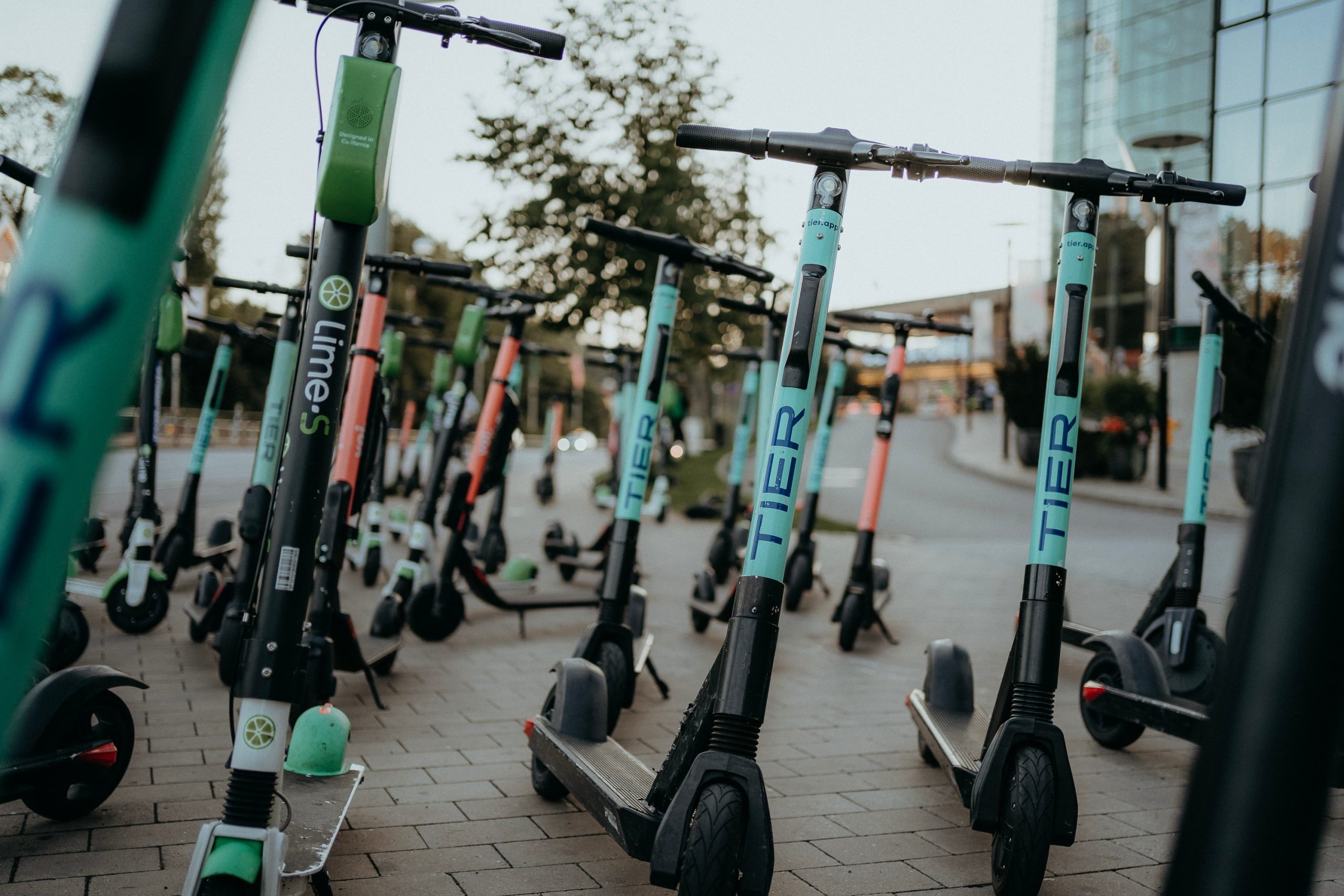
While e-scooters have risen to the top transportation vehicle in cities, a great frustration slowly sets in. How do they influence the cityscape?
Billboard
Skyscrapper
Halfpage
E-Scooters: From hype to frustration
E-Scooters play a huge role for a lot of us in the way how we travel within city boundaries. Scooters appeared more than 20 years ago, but it was only around five years ago when torrents of rental e-scooters floated the streetscapes. They are easily recognisable by their signal colors of lime green, pink, orange or turquoise. The fact that legislature of municipalities were late on the mass trend, lead to a now complex conflict situation: with not only legal, but also sociopolitical consequences.
This is, every hype turned into frustration und discontent about e-scooters sooner or later. When reaching the high point of 25,000 in Oslo, the city had to react and regulate the proliferation of rental scooters. In 2021, the companies installed for a maximum of 8,000 commercial e-scooters. So what happened on the way from hype to great frustration? Answering this question is important, because we’re negotiating what our cities should look like in the future. Who tries to get a seat at the table while designing it?
Easy rental system
Yet the history of e-scooters is a story full of misunderstandings. First they were available for private use. However, the potential of the freely usable scooters quickly brought companies onto the scene, offering large fleets of cheap scooters for rent. An apparent win-win situation in which cities get complementary means of transportation, and companies get their return on investment.
Using the app, anyone can easily create a customer account and use it to locate, reserve and use the nearest scooters. The big advantage over the usual rental bike systems is that riders can park the scooters anywhere. Payment is convenient via app. If you have an user account with a particular provider, you can use the associated fleet vehicles in any city. But with great power comes great responsibility.

Public space and a company’s garbage
The problems associated with their large number make e-scooters a pressing issue in road traffic regulations as well as in the cityscape in general. However, one scooter isn’t a problem to call jurisdiction upon. What happened at the beginning was an unregulated oversupply of rental devices. That led to users carelessly parking on sidewalks or tactile guidance systems, quite a lot ended up in rivers. Because unlawfully disposed fleets did not seem to be a big harm to the companies, they didn’t felt responsible for taking care of the problem.
With this development, laws are in the making that regulated an already deadlocked problem. Still today, so-called “clean-up patrols” in Paris exist. They are cleaning squads, cleaning rivers and streets from broken or simply disposed scooters on behalf of the provider companies. Anne Hidalgo had described the situation as “anarchic,” not worthy to a democratic metropolis. French Transport Minister Elisabeth Borne even spoke of the “law of the jungle” in the context of the scooter problem.
In 2019, there were 19 internationally active providers and thousands of rental devices across Europe. The careless usage of them is not only a problem for people. Above all, the battery-powered devices are also an environmental problem, when the batteries end up in the trash instead of being properly recycled. With that, the companies remove them therefore from the circular economy. The lack of regulation denounce many cities as a state matter, and the jurisdiction cannot hold anyone responsible for taking care of the problem.
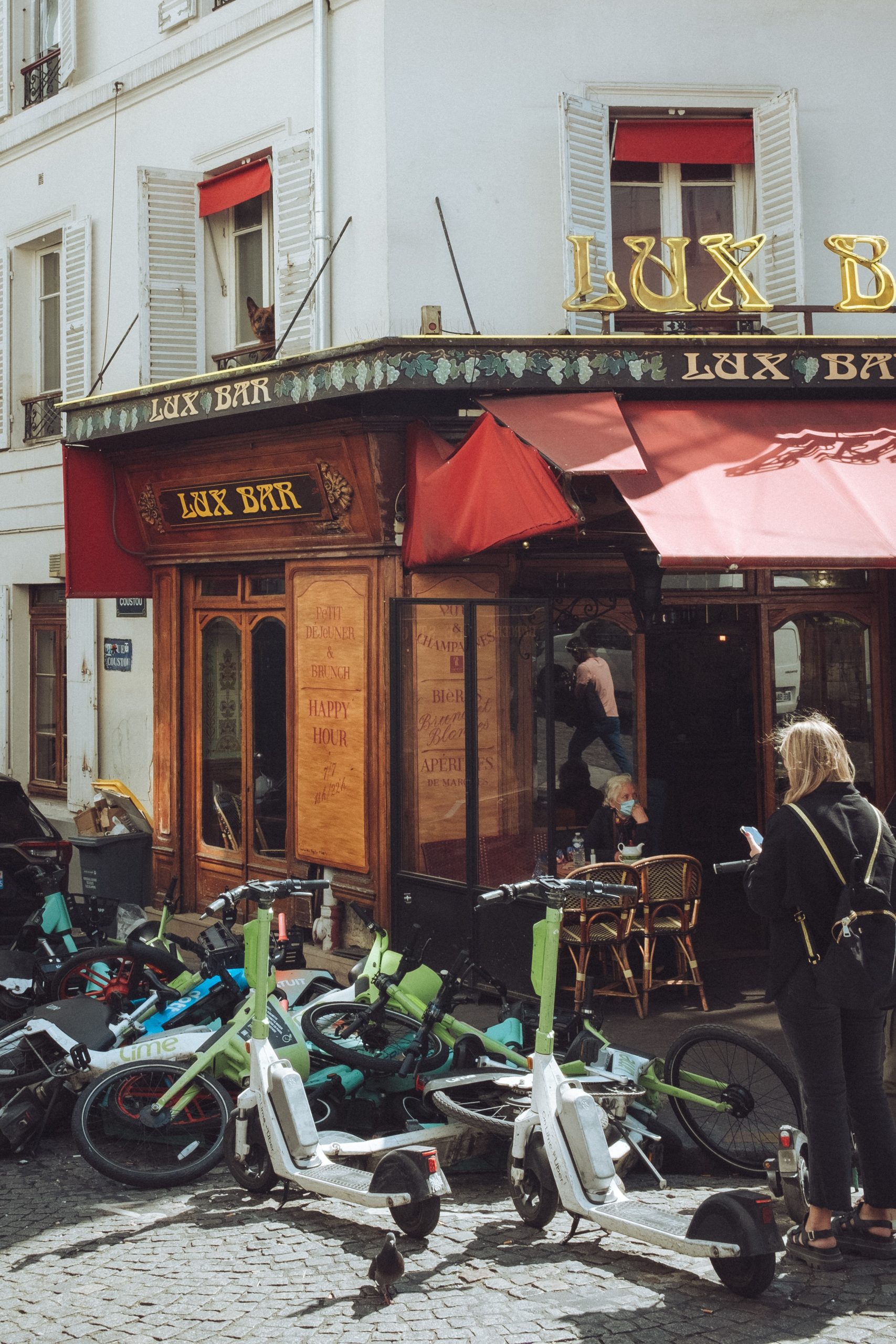
Rules and laws
Ultimately, the scooters had to be legally classified within the framework of the road traffic regulations in order to create clear conditions. In many cities, a ban on parking on sidewalks has been enforced to date, and in most countries driving is now only permitted on bike paths and only in exceptionally on the road. According to laws in Germany and Scandinavia for example, the e-scooters are equal to bicycles. The problem here is that the regulations that apply to bicycles sometimes cannot or should not be applied one-to-one to scooters.
Bicycles vs. Scooters
Bicycles have existed in our culture for centuries. Even if you don’t ride a bike yourself, you know roughly which behavior is okay – and which is not, such as riding on the sidewalk. Motorized scooters which are affordable are not only a relatively recent invention. But it’s crucial that their mobility is not exclusively limited to one’s own physical strength. Because they are neither heavy nor large, their use does not require a special driver’s license. This makes them attractive to those who have not previously participated in motorized traffic. Therefore they are unfamiliar with the road traffic regulations. In addition, most e-scooter riders ride without helmets, and fatal accidents are officially documented since 2019.
Frequent accidents, especially with pedestrians, are also one of the reasons why Paris hat to take action. Mayor Anne Hidalgo, after a referendum with a low turnout but all the clearer result (89 percent of the casted votes were against e-scooters), implemented a reduction in the number of scooters for hire, and stricter laws for them. By the first of September 2023, the approximately 15,000 e-scooters are to disappear from the Parisian cityscape. Apart from safety, Hidalgo also has another goal in mind: Paris should become the first 15-minute city and explains her approach in a video.
Apart from the quality of life for its more than two million inhabitants, Paris has interests in position itself positively as a brand: Paris is hosting the 2024 Olympic Games, by which time the city should even have become car-free. Hidalgo is currently expanding the pedestrian zones and focusing on greening the urban space. The city center is to become largely car-free by 2024. At present time, however, the planned entry into driving bans has been postponed for years.

The anti-modern 15-minute city
The concept of the 15-minute city means, that all necessary facilities should be accessible within 15 minutes by sustainable means of transport. It is contrary to the modernist city, which has been established for decades and asks for a division of functions: Residential space, work and industry should be spatially separated in order to ensure functional purity. This implies, however, long distances for everyone who (has to) move back and forth between those functions. This concept inevitably forces the private ownership of cars. A city with fewer cars must therefore deviate from the utopia of the modern city.
Paris is not alone with this goal on European ground: Barcelona wants to revise its typical block structure, albeit with a different concept. The result is the so-called Superblocks, which means merging several blocks together into one. In the center, a car-free zone will be created, which belongs mainly to pedestrians and cyclists. The city carried out trials, and the verdict is overwhelmingly positive: Less traffic and less dangerous street situations, better air quality, more peace and quiet, more opportunities for greening. And thus a reduction in heat are the quantifiable benefits of the Superblocks.
In both cases, the issue of e-scooters in urban transport must also be considered.
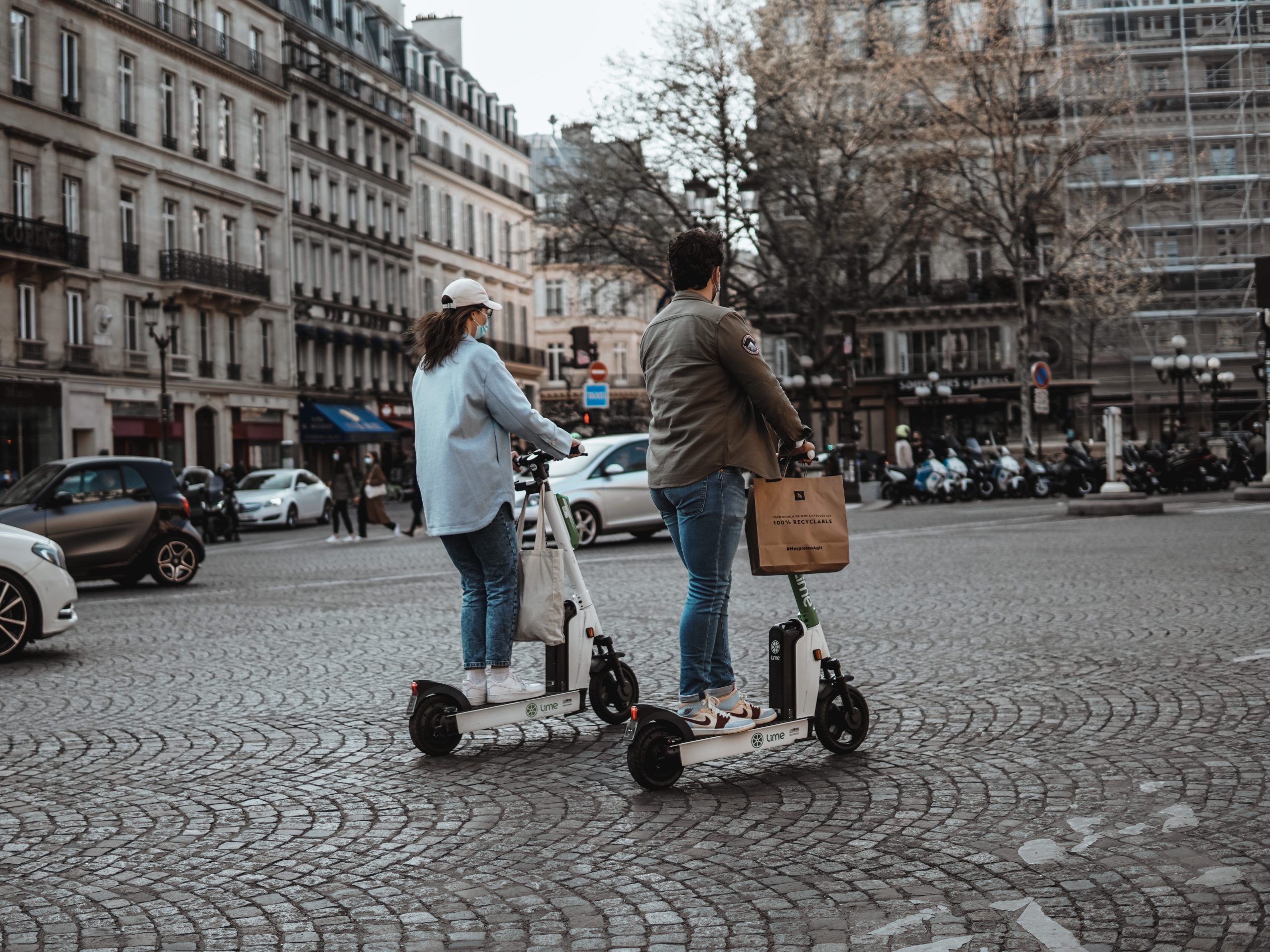
Scooters in the city
In many countries, e-scooters are equal to bicycles in order to have a legal basis for their use. Vienna introduced, due to the problem of broken and illegally parked e-scooters, stronger regulations as of 2018. Only non-motorized scooters are allowed to ride on the sidewalk. Austria considers e-scooters as bicycles under the Road Traffic Regulations (StVO) since 2019. And, just like in Paris, riders should not park on sidewalks, for example.
Since 2023, Vienna has also dedicated parking zones around so-called hotspots (i.e. highly frequented locations). In Oslo, night driving was banned in the city area to reduce the increased risk of accidents while under the influence of alcohol. However, the government of the Norwegian capital saw one of the problems precisely that e-scooters were legally equal to bicycles. This implied that they were deprived of a stricter regulatory option.
Scooter-friendly cities
In Copenhagen, inhabitants can use e-scooters, but shouldn’t park or rent them in the city center. The cycling capital of Europe is thus consolidating its well-cultivated image. Sweden brought the flood of e-scooters under control with increased fees for the providers. This is also intended to reduce careless use. The leading country within the ranking of the most scooter-friendly cities in Europe was Oslo. This was just before the reduction in the number of scooters.
Scooter-friendly cities at the peak of their popularity:
- Oslo
- Rome
- Madrid
- Zurich
- Lisbon
What was particularly significant for the ranking, was the total number of devices available. In view of current developments, cities with lots of tourism, apart from Oslo and Paris, will become increasingly restrictive as well.

Problematic life cycle
When e-scooter rental began in European cities in 2018, the estimate of the the average life span of a device was to only around 30 days. (The data here comes from the U.S.) For good reason, even five years later there still don’t existreliable data sets. They could provide information about the actual sustainability in terms of useful life.
The duration of use varies greatly. In 2019, for example, it was only a few months and thus significantly shorter than for privately used scooters. In the case of private e-scooters, there is a high price of battery replacement and the relatively poor workmanship of the scooters. And that would mean that the entire vehicle would be tossed away when the battery died. That way, Rental devices are more stable for multiple repairs. Two to three years on average, the lifetime of a scooter goes, indicate the lenders in 2023.
The suppliers have a great interest in not eliciting the useful life of the devices. After all, virtually all companies advertise their products with the buzzword sustainability. And of course e-scooters have many advantages in terms of sustainability for getting around in the city. Some of them are flexibility, taking up little space, running without an internal combustion engine, but via a rechargeable battery. Therefore cause neither noise nor exhaust fumes on site.

The limits to products and the rentable image
Young people in the big cities in particular use the rental devices, which further underscores the hip urban image. At the same time, the disadvantages of using them in urban centers are evident. Pedestrians, cyclists and car drivers find the nimble, agile and quiet e-scooters a thorn in their side. They tend to travel too fast in pedestrian zones and too slowly on the roads. They have no business on sidewalks, and a big prejudice is that users don’t obey any traffic laws.
By renting, users also have a lower emotional attachment to the e-scooters, which means they are more careless with them than they would be with their own devices. Under the pressure from cities and municipalities, providers finally implemented safety precautions, such as requiring to take a photo of parked e-scooters. This then documents the proper condition and the legal parking location. This prevents misuse of the rental devices.
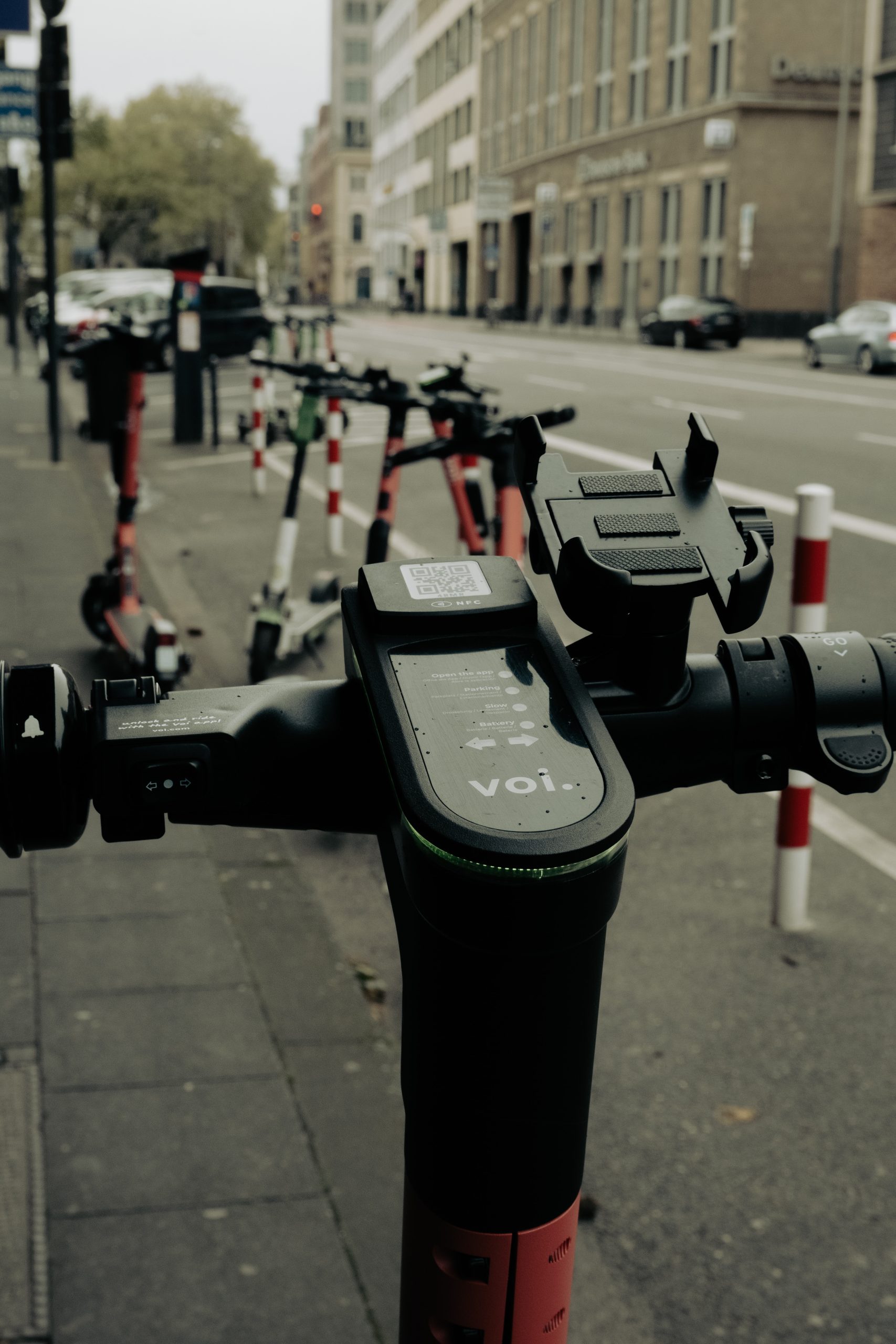
The providers
Another issue with the use of e-scooters arises in terms of the trips they replace. In 2018, Paris was the first European city where the companies provide e-scooters on a rental basis. Barcelona and Madrid followed. In 2019, there were already a total of 19 providers in Europe.
The largest providers of e-scooters in Europe:
- Tier (Germany)
- Bolt (Estonia)
- Voi (Sweden)
- Lime (USA)
- Bird (USA)
Lime claims that since the company’s foundation in 2017, almost one fifth of all scooter trips have replaced a car trip. The hype at the beginning was great, because e-scooters seemed to solve many mobility problems directly for users: they can bridge the “last mile.” This refers to the distance a person has to walk from the last means of transportation to the final destination.
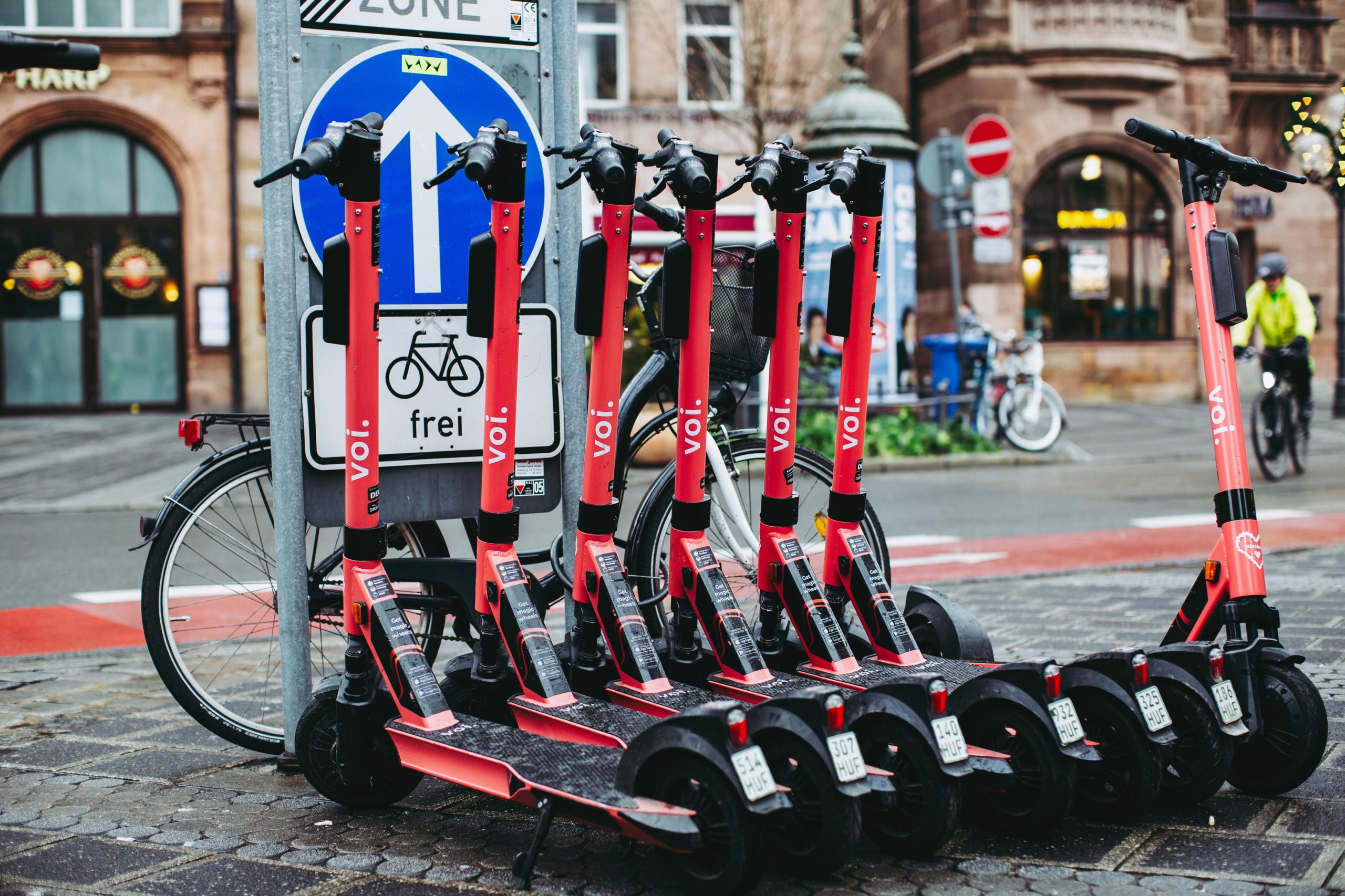
The last mile
Since buses and the like halt at a fixed network of stops, the riders often need a bridging solution for the proverbial last few meters. If you have to walk another twenty minutes from the bus stop to your destination, the attractiveness of sustainable means of transportation drops rapidly. The car is still unbeaten as a door-to-door solution in many areas, but it has the disadvantages of high acquisition and maintenance costs, the combustion engine, exhausting fumes and the problem of space when parking. Most of the time, users park the car instead of on the road.
E-scooters are a valid alternative to cars if they are used more in outlying areas. In 2021, the German Federal Environment Agency does not count e-scooters as a sustainable means of transport. According to the report, the biggest problem for urban transportation is private cars in cities. This is because the number of journeys will not decrease as a result of the increasing use of e-scooters.
However, due to the lower density of public transport in the outer areas of cities, this is precisely where e-scooters could score points by extending the distance that the riders travel beyond the two-kilometer-limit. After all, people tend to use bicycles or walk up to this length anyway. In any case, both modes of transportation are more sustainable than using the e-scooter.
The true profits behind the rental business
Lenders have one big common denominator: they communicate strongly and consistently that they are pushing a sustainable business model. The companies pepper their websites Lime, Tier and others with buzzwords like “green”, “sustainability”, “community” and “innovation“. For companies it was enough for a long time to simply offer a product. Due to the tough competitive conditions, products have to come up with qualities far beyond the sole product features. In the case of e-scooter rental companies, these are terms with which those people like to identify who are also more willing to do without a car or drive electric devices in order to avoid emissions.
In Germany alone, sales from the scooter rental business were 167 million euros in 2022, putting the car nation in second place worldwide, ahead of France and behind the U.S. Accordingly, there is a large lobby behind the market that would like to dock directly with local politics. There, it can work with decision-makers to develop new laws that favor the use of e-scooters, so they can make more money. For the most part, cities have special autonomy in legislation, so they can also adapt national laws within their own urban areas. If cities like Oslo and Paris now enact restrictive scooter laws, this will narrow the market and consequently the sales of the individual providers. And that is not in the interest of the profiteers.
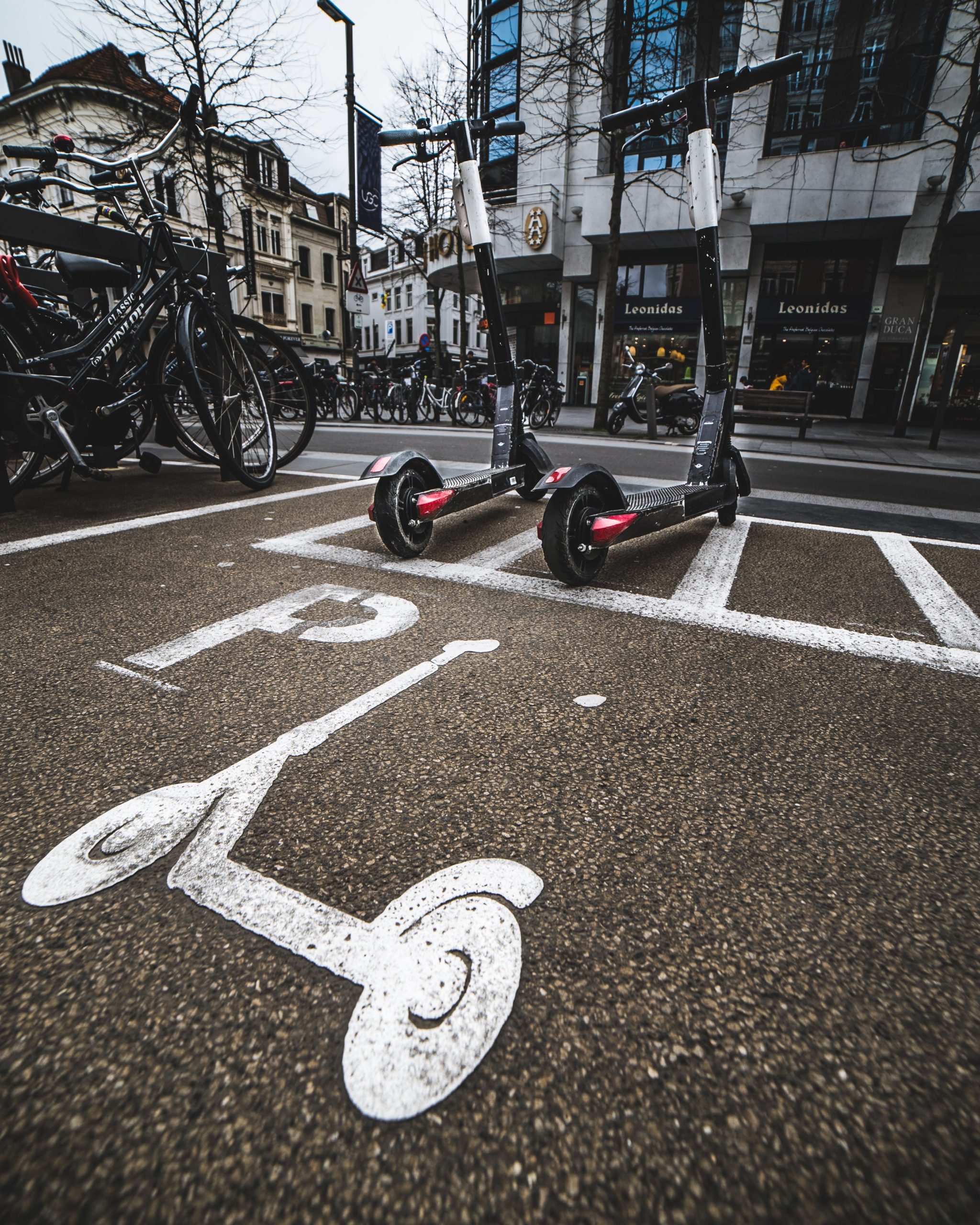
Representation of interests on a large scale
A dedicated online magazine highlights the interests, considerations and strategies of the rental companies. Ironically, the ZAG Group is not well known outside its industry, at least not to the general public. Yet the ZAG Group is well worth knowing; after all, it is made up of the leading entrepreneurs in the e-mobility sector outside the automotive industry and represents their interests. And these interests are so strong that, for example, the car rental company Hertz was sued by Lime for allegedly unlawfully poaching engineers.
ZAG Group also maintains ZAGdaily, an online magazine focused on e-scooters and e-bicycles. The goal is to establish sustainable mobility in cities worldwide. To this end, the magazine invites CEOs, influencers and other industry players to write about their opinions or provide insights into the motivations and intentions of decision-makers.
Responsible for the ZAGdaily are Mark Cutler and Richard Woods as well as a handful of editors. And they promote e-mobility with the buzzwords of sustainability, CO2 neutrality and as a compatible alternative to noisy, smelly and congestion-causing motorized private transport. But they ignore the negative aspects of e-scooters. Be it the dangerous driving behavior and the high speed, obstructive e-scooters and the increase in accidents, especially at night and under the influence of alcohol.
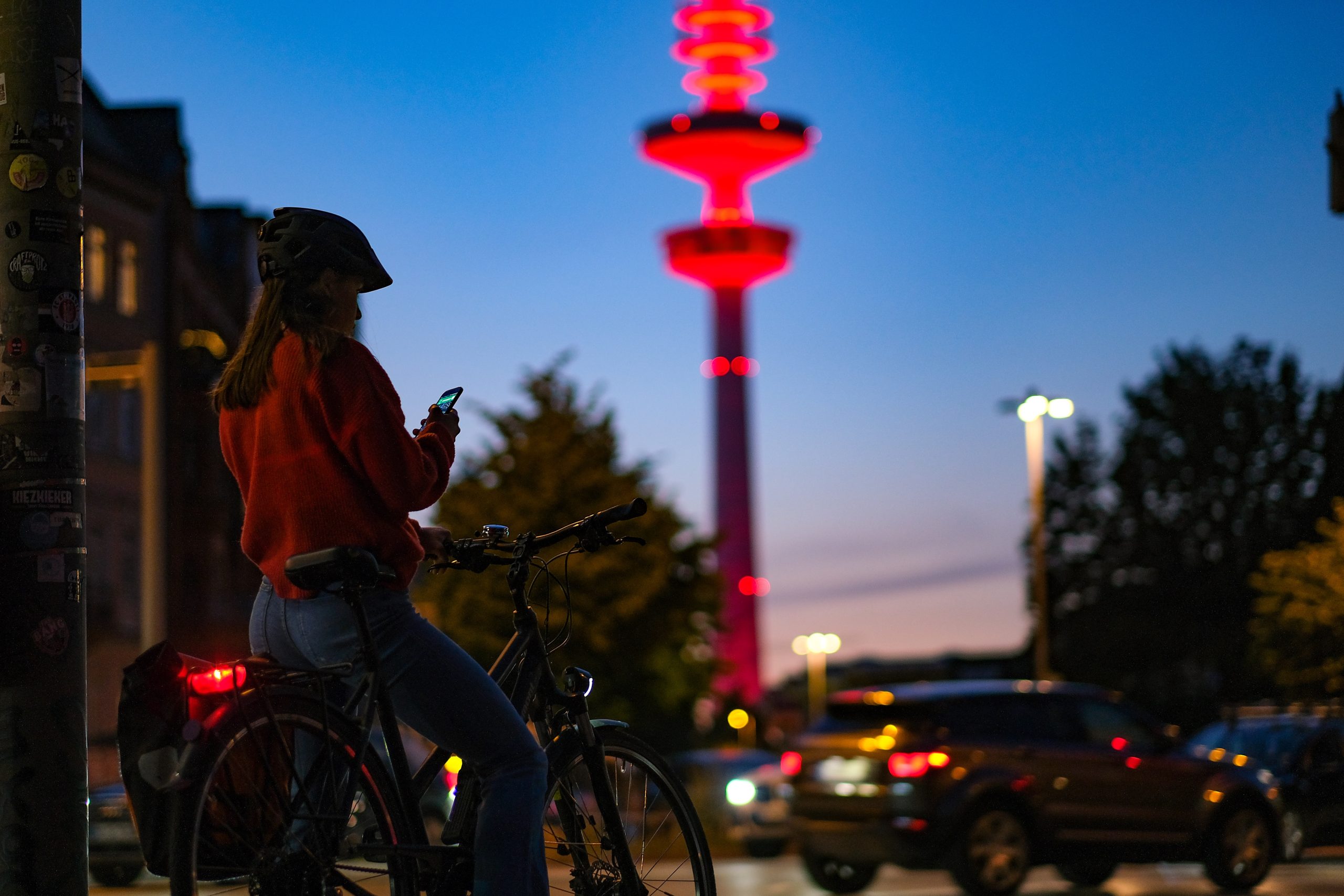
Human rights and revolution
The online presence should create a basis for making the self-proclaimed need for change in urban life visible to political decision-makers. The ZAGdaily thus pursues a clear agenda. It has not only objective information dissemination in mind, but especially the influencing of the public discourse in favor of the companies that want to support the sustainable transport turnaround. It shows how important the urban market is for the companies that provide e-scooters.
There is also talk that “mobility is a human right” (Horace Dediu, analyst, influencer and founder of various mobility companies), or that the “safe and legal use of e-scooters has the potential to revolutionize the way we commute” (Adam Norris, founder of Pure Electric). Anything is possible, and e-scooters seem to become the savior of the present.
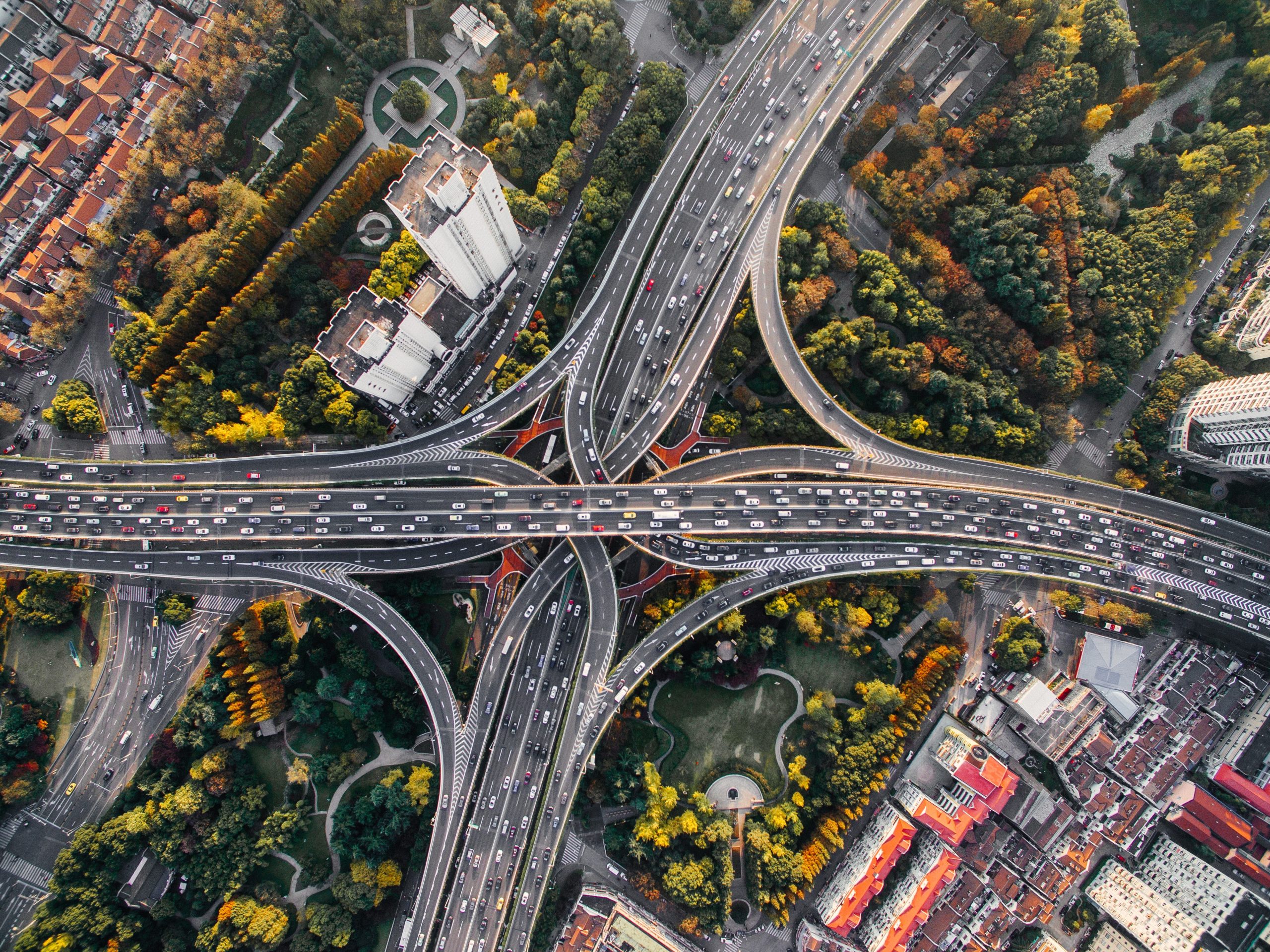
The embattled city
How much can and should private companies intervene in public affairs? Voi, one of the largest suppliers of e-scooters in Europe, clearly sees itself as a co-designer in the public space. Jack Samler, Regional General Manager for the UK and France, affirms on ZAGdaily that they will be back on Paris’ streets sooner or later. He says it’s necessary to work with the public administration on ways to make individual transportation possible; the future of transportation lies in the cooperation of industry and politics.
But others say that the population must design the public space. Modern urban concepts intervene in the e-scooter issue, just as, conversely, e-scooters symbolize the transition from private enterprise to public space. The dead pledge is individual locomotion under the guise of sustainability.
Unconsciously, it’s all about the question: What are the forms of mobility we want to use in the city? Scooters make the 15-minute city more tangible than ever. However, the cities need to plan the integration of e-scooters in urban mobility carefully. The city government, as it acts as a representative of the citizens, should take the lead. Shareholders or sales cannot drive state affairs.
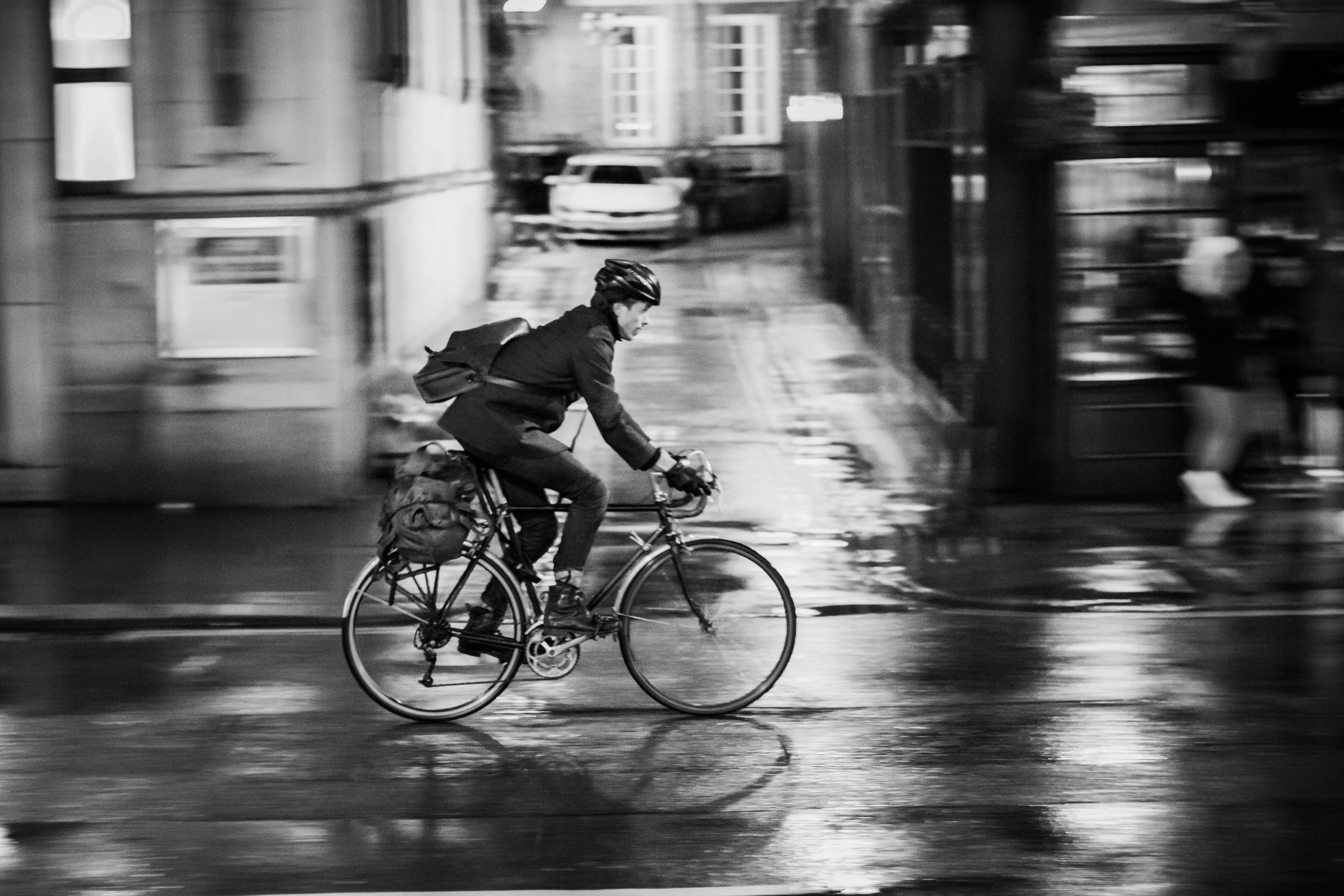
Where do we go?
In reality, cities are reacting slowly to the large number of rental e-scooters. Companies are offering their devices without proper laws, adequate built infrastructure, and without the inclusion of stakeholders. But actually, cities should first elicit needs, considering all possible means of transportation. And that, especially with a focus on low-fuel, low-emission, safe, and inclusive mobility. Only in the second step will a concrete integration in the real urban fabric take place on the basis of transparent tenders, with a publicly accompanied evaluation program.
If you can believe the evaluations, e-scooters are by no means the panacea for our urban mobility problem. They are only a small piece of the puzzle on the way to climate-friendly and truly sustainable mobility. And it also includes non-motorized bicycles and local and long-distance public transport. As of today, e-scooter trips largely replace trips by bicycle or on foot. They in no way solve the problem of the constant number of car trips.
With a focus on pedestrians, higher quality urban spaces are automatically planned for all people, with wider paths and reduced traffic. The reduction of motorized traffic also means less noise as well as less stress for residents. In principle, the focus of road use already changes the weighting of the individual means of transportation. For example, the city planners can design new streets from the outset as residential streets or pedestrian paths in which cars are not the literal measure of all things.

Urban society and urban mobility
The struggle and the right to rent an e-scooter are nothing less than the negotiation of urban mobility under the guise of sustainability. The real game changers, however, are private companies whose top priority is profit maximization instead of a truly sustainable and anthropocentric city. It is necessary to look critically at the acting players – and not to bluntly believe those who shout the loudest. After all, the goal of sustainable transportation is not profit maximization or economic return, but to promote well-being and comfort in cities.












